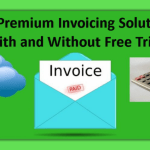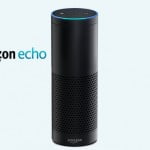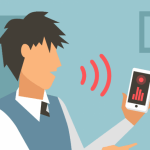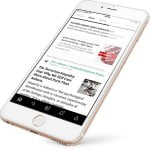What Are Promotional Blog Articles?

A promotional blog article is a piece of content that advocates for a business or brand. It often informs readers about a product or service they can buy, or a promotion in which they can take part. However, it can also encourage readers to interact with the company in other ways, including downloading additional content or signing up for a newsletter. Writing promotional content helps to keep readers informed about what a company is offering.
Why Do Businesses Use Promotional Blog Articles?
Companies receive several benefits from writing promotional blog articles, including:
Driving Traffic to Your Site
When you combine promotional blog articles with effective search engine optimization (SEO), you can increase your website’s organic traffic and ranking. SEO is the process of improving your content and website so people can find it more easily on search engines. The better your SEO is for blogs, the higher each piece can rank on Google search engine results pages (SERPs). The higher it ranks, the more likely Google will recommend it to relevant searches. This means more people are likely to click on it and increase the traffic to your blog and website.
Increasing Sales
The primary goal of most content marketing campaigns is to entice people with content and convert them into leads or potential customers. Writing promotional blogs can help showcase your products and services and increase that rate of conversion. This can have a pleasant effect on your sales as your blog attracts visitors and convinces them to buy the product or service you’re promoting.
Informing Your Customers
If you’re announcing new products or services, promotional blogs are a great way to inform your customers. It lets them quickly learn all the information about the product or service and gets them excited about the release. Promotional blogs are also a great way to communicate upcoming sales or promotions. By writing a blog about a new deal, you can inform your customers about it and hopefully generate more interest.
Repurposing Content
You can use the copy you write for promotional blogs in other areas of your marketing. Use the product descriptions on your e-commerce website. Adapt some of the content to use in online advertisements. Highlight some of the blog’s quotes as social media posts. There are many ways you can reuse and repurpose your promotional blog into other pieces of content for your marketing campaign. That can save you time and energy compared to creating that content from scratch.
16 Tips for Writing Promotional Blog Articles
Here are some helpful tips for writing promotional blog articles:
1. Start with the Hook
Headlines and titles are important to draw in readers. Not only should your title encapsulate what the content is about, it should also attract the reader’s attention. When writing your headlines and titles, it’s important to use some important strategies, such as:
- Highlight the major benefit: If your article provides people with a benefit, mention it in the title. For instance, “Our New Vacuum Saves You A Lot of Hassle.”
- Keep it short: Make sure your title is between 60 to 65 characters. This can ensure that the full title displays on Google’s search results.
- Add numbers: Numerals are a great way to attract attention. If you’re running a promotion, mention the savings. If you’re sharing helpful tips, mention how many tips you’re offering.
- Ask questions: Asking questions can help you highlight benefits, while also enticing readers to click on your article. For example, “Do You Want a Vacuum That Works on Every Type of Floor?”
- Add enticements: Enticements are short additions you can give to the end of your title to encourage audiences to click. For instance, you can add “[Free eBook Download]” or “[Get 50% Off]” at the end of your headline or title.
Want more helpful tips for hooking your audience? CopyPress offers an eBook on how to write effective titles and headlines. Download your free copy today!
2. Know Your Audience
Knowing your audience is important because it helps you target the right people and their needs. For example, let’s say you’re releasing a new app for your customers to track their fitness and health. Your audience might include people who’ve cared about their fitness performance for a long time. But it could also include people who’ve recently become interested in their fitness and health. Those are two subgroups of your audience. Knowing that, you could draft an article targeting both, but it might be more effective if you choose one or the other.
If the people just learning about health and fitness are the larger subgroup, you can write a promotional blog that they relate to more. You can talk about their goals and desires and show them how your app can help them live a healthier lifestyle. But to do this, it’s important to first learn more about your audience. Doing so can help you target them more efficiently. To learn more about your audience, consider using tools like:
- Surveys: Surveys allow you to ask your audience and customers questions to learn more about them. You can add polls to your website and content, or you can send them to customers after they make a purchase.
- Buyer personas: Buyer personas are fictional customer profiles you create to see who would benefit the most from your products or services. Essentially, they’re representations of the people who you imagine your target audience to be, including purchase behavior and interests, using either logical thinking or data from additional sources.
- Social monitoring: Social monitoring is the act of looking through your social media accounts to see who interacts with them. Based on the people who like, share, and comment, you can develop a better idea of the people who might have an interest in your products or services.
- Google Analytics: Analytics is a free tool that Google offers which can track your website’s visitors and activity to tell you more about them. It can give you information on your audience’s demographic, behavior, and interests.
3. Tell a Story
Stories are a great way to keep your audience engaged with your article. It also helps people become emotionally invested in what you’re talking about. Deloitte Digital conducted a study in 2019 that looked at how emotional connections drive brand loyalty. It found that 60% of long-term customers used emotional language to describe their favorite brands. Deloitte also discovered that 44% of customers recommended brands based on emotional criteria. Though you might feel inclined to talk about your products, features, and prices immediately, leading up to that with a story can help customers emotionally connect to the blog.
Consider telling tales like how you created the product or give more information about the employee who thought of it. You can even tell a fictional story about a potential customer, a problem they had, and how the product or service solved it. Use the narrative to show your brand’s personality and why your audience should care about the goods you offer.
4. Address Questions and Concerns
It’s possible that the products or services you offer might generate some questions from your readers. When writing your promotional article, it’s important to address those concerns right away. This can help your audience feel you understand them and that you care about their problems or challenges. It also helps you reduce any resistance to buying the product or service. If customers have to go to a new webpage to find an answer to their questions, they might lose interest in what you’re offering. By addressing their questions right away, you can increase the likelihood of them making a purchase.
5. Make Sure Contact Information Is Visible
Though you hope to address all the questions that a customer has, it’s possible they’re going to have more. That’s why it’s important to make sure you display the contact information of a sales or customer service representative in the promotional article. Include their name, phone number, and email address. This provides readers with an easy and quick way to contact someone from your company if they have additional questions about the product. That way, an employee from your company can answer them and hopefully complete the sale.
6. Give Examples of Success
Giving an example of a customer’s success with your product is a great way to entice people to buy. Though you can tell a story of a fictional customer, it’s even more engaging if you’re highlighting an actual customer. Talk with one or a few of your customers and ask if you can feature them in your article. Examples can include a small quote about how the product or service has helped them or you can focus the entire article on their story.
Talking about their success with the product allows readers to picture themselves in the customer’s shoes. This makes them wonder how the product could benefit them and encourages them to make a purchase.
7. Make the Author Someone of Authority
As mentioned above in the Deloitte Digital study, customers love to make connections with a brand. One way to do this is to have someone of authority, or someone they can respect, tell them about the product or service you’re offering. That can include employees like the CEO, project manager, or product designer. People believe those positions are busy and important. Seeing any of them take the time to address readers is exciting. It makes them feel special and helps them engage a little more with the content.
It also helps to humanize the content. Instead of a copywriter telling readers why the product is important, the CEO or product designer is telling them. That helps connect the brand with a real person who has an emotional investment in the company’s success. That helps customers connect to the blog and better understand the company’s values.
8. Add Internal Links and Calls To Action
Though it’s important to write about what you’re promoting, it’s just as important to link to the other products or services you offer. Adding links in the right areas of your content can help convert readers into customers. As you write your blog, it’s helpful to add two links to the product or service you’re promoting. One at the top where you first mention it, and one at the bottom accompanied by a call to action (CTA). CTAs are statements that entice a reader to interact with your company. They include statements like:
- Sign up now
- Download today
- Request yours today
- Click here
- Buy now
As the name describes, CTAs encourage your readers to take action. These are often very successful in converting your target audience into potential customers. But they can become more effective depending on where you place them. Neil Patel published an article that discussed the best place to put calls to action. He found CTAs are most effective after your audience reads the copy, in this case, your promotional blog.
Placing a link at the top of the page allows your readers to click on the product right away if they’re interested. But placing a link at the bottom with a call to action allows them to read why your product or service is so important, and then have you invite them to purchase it.
9. Be Clear About Next Steps
Next to using CTAs and internal links, it’s also important to be very clear about how customers can purchase your products or services. This can limit any confusion about the point of purchase and increase your overall sales. While writing your promotional blog, consider adding a list of steps or instructions to make sure your readers know exactly how to interact with your brand. For instance, if you’re offering them a discount, make sure they know how to apply it to their purchase. This can increase your customer satisfaction and avoid possible miscommunications.
10. Use Statistics When Possible
Statistics are a great way for people to see the effectiveness of your products or services. It gives them a concrete fact to remember. It shows exactly how helpful your brand can be and why they should make a purchase. For example, let’s say you created a product that can automatically chop up vegetables for your consumers. Your promotional blog can mention “saving people time.” But it might be more convincing to know exactly how much time.
Maybe cutting vegetables with your tool saves 25% of their prep time or cooking time. That sounds a little more impressive and less generalized. It also shows potential customers that you’ve researched your product’s benefits and that it has tested and proven results.
11. Limit Sales Jargon
Using plain language in your promotional articles can help you connect to a wider audience because people can understand it more easily. Though jargon can sometimes show industry expertise, it’s possible that not everyone knows what certain words or phrases mean. For example, in marketing, it’s important for companies to judge their campaigns based on KPIs. But not everyone knows that “KPI” stands for “key performance indicator,” and even then, they might not understand the definition.
Replacing jargon with plain language can help you connect better with your target audience and entice them to make a purchase. If you must use jargon, define what each word or phrase means. That can show your industry knowledge and expertise while providing your readers with new information they can use. One of the best ways to approach introducing jargon in content is to pretend like the reader you’re writing to is completely new to your industry or field.
12. Use Images Where You Can
Images and GIFs are a great way to enhance your blog’s readability and attract your audience. Using images in your content can help break up chunks of text to make the information more easily accessible to your readers. That can help keep them on the page for longer, which shows Google people are finding your content useful and interesting. When you use pop culture images and GIFs, it can also help your brand stay relevant and exciting. It makes your business feel more human and encourages your audience to engage with your company.
13. Focus on The Problem
Most often, when a business releases a new product or service, it’s to help customers with a certain problem or challenge. For example, is your flashlight running out of battery too quickly in an emergency? Buy a long-lasting flashlight. Do your kitchen knives have trouble staying sharp for a long period? Buy a knife made from high-quality steel. These products help solve a consumer challenge. When you write a promotional blog, focus on the audience’s problem and how your product or service can help.
This can help your readers picture exactly how they would use your product and the ways it could benefit them. That can help encourage them to make a purchase and increase your sales. It can also show that your brand understands its target audience. By addressing their problems or concerns, you show your brand relates to your customers’ struggles and is there to help.
14. Add Outbound Links Where Appropriate
Outbound links are those you add to your content that direct your audience to other websites. Though the principal goal of promotional blogs is to keep your audience on your own website, there are benefits to using outbound links when it’s appropriate. There’s debate in the world of content marketing on how much outbound links affect your content’s SEO, but it’s definitely believed to increase quality and helpfulness. Outbound links often give your readers helpful information, which they appreciate. This can build brand loyalty and mark your company as an industry expert.
Improving your SEO may increase your organic traffic, which can help more people see your blog. When you’re deciding to use outbound links in your content, consider the information you’re trying to share. If you’re using statistics or facts from other resource articles, link to them so your audience knows where you got the information. This helps them know you’ve done your research and your blog is accurate and helpful.
15. Use SEO Strategies
SEO is important because it can help your promotional article reach a wider audience. When you optimize your content for search engines, they understand exactly what your content is trying to share and to whom it should display. That can help improve your content’s ranking and increase its organic traffic. Following SEO guidelines can also help make your content more readable and decrease its load time, which can keep people on your website for a longer period. While you write your promotional blog, consider different SEO tactics, including:
- Targeting the right keywords
- Filling out metadata
- Finding smaller image sizes
- Limiting page plug-ins
- Using bullet-point lists and headings
16. Make It News
Pairing your promotional blog with news content can help you sell your piece while you target a trending topic. This tactic is most effective when the news relates to your brand’s industry or field. For example, let’s say your company sells custom t-shirts but wants to sell custom sports apparel for local teams as well. You could start your promotional blog by writing about a sports team that recently changed their jerseys. You can mention your opinions about the new look and then lead the readers into more information about your new sports apparel service.
By writing about a trending topic, you can effectively generate a larger audience while promoting your business and its services. This can help increase your organic traffic and drive more people to your content.
Other Types of Blog Articles for Businesses
Promotional blogs are a great way to sell your products and services, but you can use other types of blogs for different content marketing strategies. Here are some other types of blog articles and when you might use them:
Topical Blogs
The primary goal of a topical blog is to generate an audience through trending topics. Much like the news, these blogs talk about current events, but they’re often focused on a specific industry or field. For example, a business that sells dog treats would focus their topical blog on news about dogs, popular dog treats, or popular tricks to teach your dogs instead of news about Facebook becoming Meta. Though the latter could be a nice trending topic, it doesn’t relate to the company’s industry.
These blogs are good for generating organic traffic, but they often have a fleeting appeal because the trend surrounding the content may eventually die. This can create a lot of dead pages on a website, which can lower its quality and overall ranking with Google.
Evergreen Blogs
Evergreen blogs are the opposite of topical blogs. They deliver information to readers that stays relevant for a longer time. This information often helps the readers with certain tasks, provides them with definitive information on an industry, or gives them tips on how to accomplish things, like writing a promotional blog article.
Because evergreen blogs don’t just target trending topics, this helps them generate traffic for a longer period. They also provide audiences with detailed and helpful information that allows them to develop trust and loyalty for a brand. For example, a business that sells car oil might write the evergreen blog, “How To Change Your Car’s Oil.” This topic is likely to generate traffic and can also encourage readers to buy the company’s product.
Each type of blog, whether it be promotional, topical, or evergreen, is important for your content marketing campaign. But it’s often most helpful to combine different strategies to get the best results. Creating trending or evergreen content that also promotes your company’s products and services can help keep your audience informed while you develop new leads and potential sales. Use these tips for writing promotional blog articles to help you improve your marketing efforts and develop better content for your brand.
[“source=copypress”]











